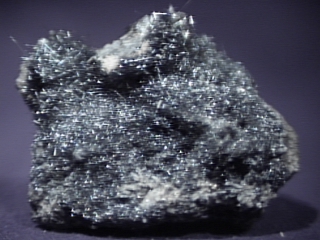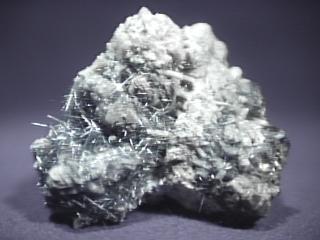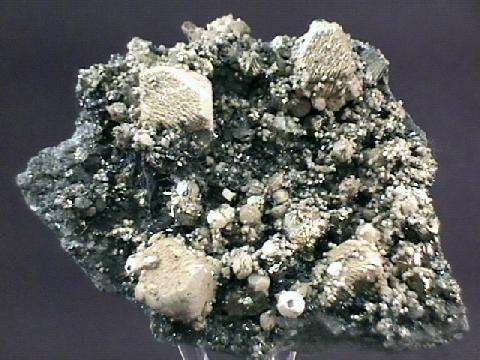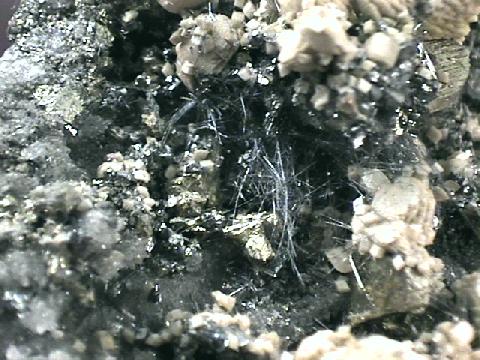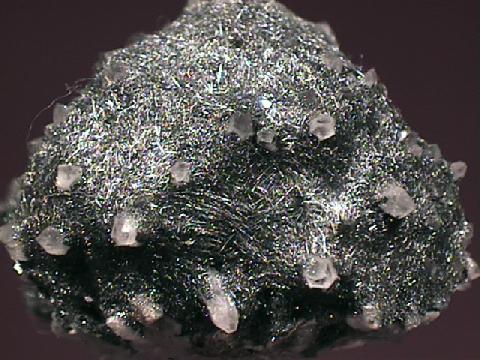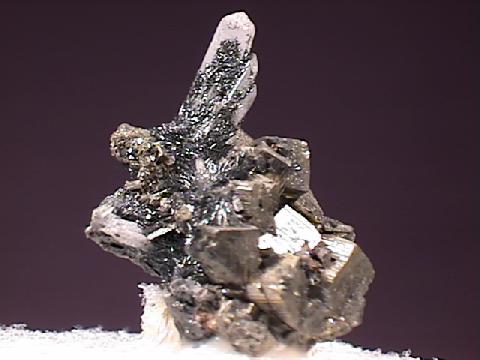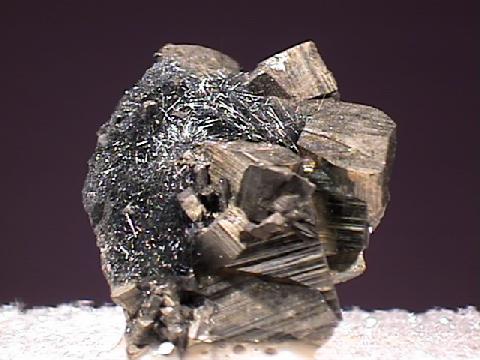 THE MINERAL BOULANGERITE
THE MINERAL BOULANGERITE
- Chemistry: Pb5Sb4S11, Lead Antimony Sulfide
- Class: Sulfides and Sulfosalts
- Uses: Mineral specimens and as minor ore of lead.
Specimens
Boulangerite is a sulfosalt, a segment of sulfides where the antimony acts more like a metal than a non-metal and occupies a position where it is bonded to sulfurs. Boulangerite and jamesonite have been called feather ores. A variety of boulangerite is called "plumosite" due to its plumose (feathery) habit and was thought to be a different mineral.
PHYSICAL CHARACTERISTICS:
- Color is blue lead gray to gray.
- Luster is either metallic or silky.
- Transparency: Crystals are opaque.
- Crystal System: Monoclinic; 2/m
- Crystal Habits include dense or sparse felted masses of acicular crystals. Also in fibrous and compact plumose (feathery) masses.
- Cleavage is good in one direction parallel to the length.
- Fracture is uneven.
- Hardness is 2.5
- Specific Gravity is 5.8 - 6.2 (heavier than average for metallic minerals)
- Streak is gray to brown.
- Associated Minerals include pyrite, sphalerite, galena, siderite, quartz and arsenopyrite.
- Other Characteristics: Crystals are flexible.
- Notable Occurrences include Trepca, in the former Yugoslavia; Pribram, in the former Czechoslovakia; Sala, Sweden; Hunan, China; Harz, Germany; Baja California, Mexico and at several locations in Idaho, Montana, Colorado, Washington and Nevada, USA.
- Best Field Indicators are crystal habit, flexibility, associations, color and luster.

